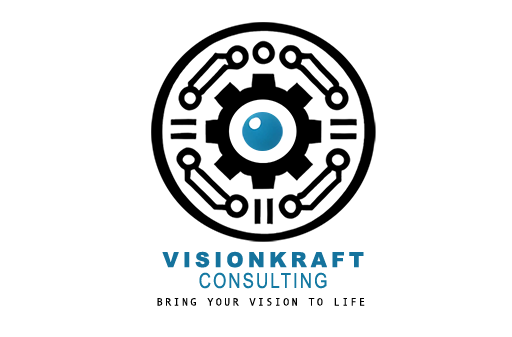
technical-seo-for-websites:
Step-by-Step Guide to Technical SEO for Websites | VisionKraft Blog
Welcome to the VisionKraft blog, where today we delve deep into the essentials of technical SEO for websites. Our goal is to equip you with actionable strategies and insights that will optimize your site for search engines, enhancing both visibility and performance. Whether you’re involved in AI, digital marketing, healthcare technology, or sustainable development, these practices are crucial in navigating the digital landscape effectively.
Understanding Technical SEO
Technical SEO refers to the process of optimizing the infrastructure of a website so that search engines can crawl, index, and render it effectively. It lays the foundation for successful SEO strategies, ensuring that your content reaches its intended audience.
Key Components of Technical SEO
1. Site Speed: A fast-loading site enhances user experience and positively impacts rankings.
2. Mobile-Friendliness: With mobile-first indexing, your site must perform seamlessly on mobile devices.
3. Secure Sockets Layer (SSL): SSL certification secures the connection between your website and its users, a factor favored by search engines.
4. Structured Data: Implementing structured data (Schema markup) helps search engines understand and display your content better.
Step-by-Step Optimization Techniques
Step 1: Conduct a Site Audit
Start by assessing your current technical SEO state. Tools like Google Search Console or Screaming Frog SEO Spider can help identify issues such as broken links, slow page load times, and improper redirects.
Step 2: Improve Site Structure
Ensure your website’s architecture is logical and easy to navigate. A well-structured URL hierarchy aids both users and search engines in understanding the relevance and relationship of your content.
Step 3: Optimize Speed
Minimize HTTP requests, enable compression, and optimize images to boost site speed. Google PageSpeed Insights offers valuable recommendations for enhancing your site’s performance.
Step 4: Ensure Mobile Responsiveness
Utilize responsive design to ensure that your site is accessible and user-friendly across all devices. Google’s Mobile-Friendly Test can guide you in optimizing for mobile.
Step 5: Secure Your Site with HTTPS
Transition from HTTP to HTTPS to secure user data and gain trust from both users and search engines.
Step 6: Implement Structured Data
Use Schema.org markup to highlight important information such as products, reviews, and events. This enhances the display of your site on SERPs (Search Engine Results Pages).
Benefits of Technical SEO
Error fetching quote from OpenAI.
Technical SEO not only improves your site’s search engine rankings but also enhances user experience, leading to higher engagement rates and conversions. For businesses in sectors like healthcare technology and sustainable development, where data security and user trust are paramount, strong technical SEO is essential.
Real-World Applications and Case Studies
For instance, a healthcare technology company doed HTTPS across their platform, resulting in a 30% increase in user trust and a 20% uplift in organic search traffic. Furthermore, an e-commerce site used structured data to enhance product listings, significantly improving click-through rates.
Conclusion
Incorporating technical SEO practices is crucial for any website aiming to achieve and maintain high search engine rankings. By following the steps outlined above, you can ensure that your site not only meets but exceeds the technical standards expected by modern search engines.
Call to Action
Ready to elevate your website’s performance with cutting-edge technical SEO strategies? Contact VisionKraft today to explore how our expertise in AI, digital marketing, and technology can transform your digital presence. Visit us at VisionKraft’s Services](#) to learn more.
Further Reading and Resources
1. [Google Search Console
2. PageSpeed Insights by Google
3. Schema.org
Meta Description: Discover essential technical SEO practices for websites in our comprehensive guide. Learn how to optimize site speed, structure, security, and more with VisionKraft!
Thank you for taking the time to read our blog! We hope you found the information valuable and insightful. If you have any questions, comments, or topics you’d like us to cover in future posts, please don’t hesitate to reach out. Stay tuned for more updates, and don’t forget to subscribe to our newsletter for the latest news and insights.
Warm regards,
The VisionKraft Consulting Team
